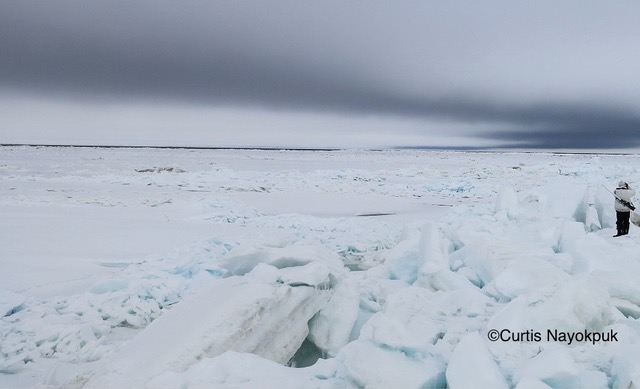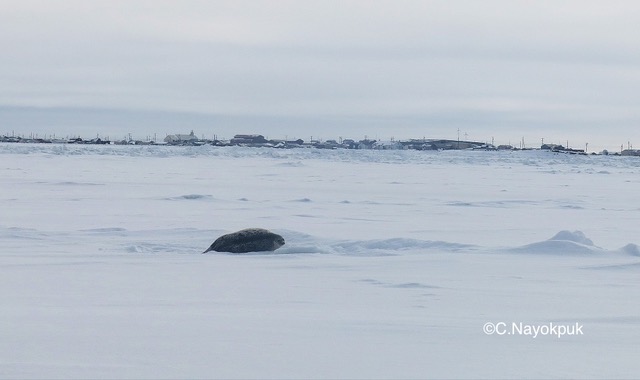By: Lisa Sheffield Guy, ARCUS
The Sea Ice for Walrus Outlook (SIWO) combines sea ice, weather, and wind forecasting information from the National Weather Service (NWS) with local observations from indigenous subsistence hunters and sea ice experts in five Bering Strait communities. The 2017 season began early, on 31 March, in response to record low winter maximum sea ice extent. This first outlook provided a summary of the state of the ice at the season’s start, contributed by Matt Druckenmiller (Study of Environmental Arctic Change Sea Ice Action Team) and Hajo Eicken (University of Alaska Fairbanks), detailing the sea ice conditions over winter. Throughout the 11-week SIWO season, dedicated local observers from Wales, Shishmaref, Nome, Gambell, and Savoonga provided photographs and detailed descriptions of ice, weather conditions, and subsistence activities. Much of the Bering Strait was nearly sea ice-free by mid-May, with sea ice retreating from the Chukchi Sea at the earliest time in the satellite record. SIWO observers in Savoonga and Gambell reported very difficult spring hunting conditions for walrus due to the limited presence of seasonal ice. The season concluded Friday, 9 June with a final report focused on the Shishmaref area, which still had a small amount of shorefast ice remaining.


During 2017, SIWO proved to be a valuable tool for information exchange between weather forecasters and local communities in the Bering Strait region. The NWS Alaska Sea Ice Program was able to share time-sensitive information on dangerous storm conditions during winter and unstable sea ice conditions during spring with ARCUS, the SIWO project office. We immediately distributed warnings and information via the ARCUS SIWO Facebook page, which has followers from 26 Alaskan communities. SIWO local observers also shared their own photos and observations of local conditions with NWS personnel.
ARCUS serves as the lead coordinator for SIWO, with support from NSF, and in close collaboration with the Eskimo Walrus Commission, NWS Alaska Sea Ice Program, the University of Alaska Fairbanks/International Arctic Research Center, and local observers.
The weekly reports are archived on the SIWO website. For questions or suggestions regarding SIWO, please contact Lisa Sheffield Guy at lisa [at] arcus.org.
